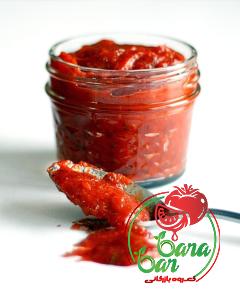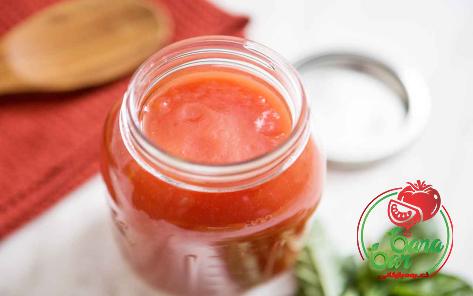Enhancing Flavor and Nutrients
Introduction
Salads are an excellent choice for diabetics as they are packed with essential nutrients and can help manage blood sugar levels. However, finding the right dressing that complements the flavors while keeping it healthy can be a challenge. In this article, we will explore the world of healthy salad dressings specifically designed for diabetics, including tips on buying, price considerations, and a range of options to enhance your salads while keeping your diabetes management in mind.
Discuss Healthy Salad Dressing for Diabetics
When it comes to salad dressings, diabetics need to consider the ingredients carefully in order to maintain stable blood sugar levels. Healthy salad dressings for diabetics typically emphasize low sugar, low sodium, and low-calorie options. Additionally, incorporating healthy fats such as olive oil or avocado oil can help improve the nutrient profile of the dressing.
Buying Healthy Salad Dressing for Diabetics
When choosing a healthy salad dressing, it is crucial to read labels and be mindful of the ingredients. Here are a few tips to help you make informed choices:

1. Look for low-sugar options: Opt for dressings that are sweetened with natural ingredients like stevia or monk fruit instead of added sugars or artificial sweeteners. These will not cause a spike in blood sugar levels and are ideal for those with diabetes.
2. Choose low-sodium options: Dressings that are high in sodium can lead to a rise in blood pressure, which can worsen complications for diabetics. Choose dressings that have reduced sodium content or are salt-free.
3. Focus on healthy fats: Healthy fats, such as those found in olive oil or avocado oil, are excellent choices for diabetics. They are known to improve heart health and help maintain stable blood sugar levels. Look for dressings that contain healthy fats and avoid those that contain saturated or trans fats.
4. Consider portion sizes: It’s important to keep portion sizes in mind while choosing salad dressings. Even if a dressing is labeled as low-sugar or low-fat, consuming an excessive amount can still be detrimental. Be mindful of the calorie content and use dressings sparingly.
Price of Healthy Salad Dressing for Diabetics
The price of healthy salad dressing for diabetics can vary depending on the brand and quality of ingredients. While some healthier options may be more expensive than traditional dressings, the benefits they offer are worth the investment in your health.
That being said, there are several cost-effective ways to incorporate healthy salad dressings into your diabetic diet. Consider making your own dressings at home using simple, nutritious ingredients like olive oil, vinegar, lemon juice, herbs, and spices. Homemade dressings are a great way to have control over the ingredients used and can be more economical in the long run.

If purchasing ready-made dressings, compare prices and read the ingredient labels carefully, paying attention to the serving size and nutritional value. Some stores may offer discounts or promotions on healthy salad dressings, so be on the lookout for those opportunities.
Conclusion
Finding a healthy salad dressing for diabetics doesn’t have to be a daunting task. By reading labels, choosing low-sugar and low-sodium options, and incorporating healthy fats, diabetics can enjoy a range of flavorful dressings without compromising their health.
Remember to exercise portion control and consider making your own dressings at home to save money and have complete control over the ingredients used. With the right choices, a nutrient-rich and delicious salad dressing can elevate your salads while keeping your diabetes management on track. Stay healthy and enjoy your wholesome salads!Extra Tips and Options for Healthy Salad Dressing for Diabetics
In addition to the tips provided above, here are some additional suggestions for healthy salad dressings for diabetics:
1. Citrus Vinaigrette: Make a tangy and refreshing dressing by combining citrus juices like lemon, lime, or orange with a small amount of olive oil. Add a touch of sweetness with a natural sweetener like stevia or honey (in moderation). This dressing is low in calories and adds a burst of flavor to your salads.
2. Greek Yogurt Dressing: Greek yogurt can be a healthy and creamy base for dressings. Mix it with herbs and spices such as dill, garlic, and lemon juice for a flavorful option. Greek yogurt is high in protein and low in fat, making it a suitable choice for diabetics.

3. Avocado Dressing: Avocado is not only delicious but also packed with healthy fats, fiber, and essential nutrients. Mash avocado with lime juice, garlic, and a sprinkle of sea salt to create a creamy and nutritious dressing. This option adds creaminess without the need for unhealthy fats.
4. Mustard Dressing: Mustard is a low-calorie and low-sugar condiment with a tangy kick. Mix mustard with vinegar, herbs, and spices to create a zesty dressing. It can also help enhance the flavors of your salad ingredients.
5. Balsamic Vinaigrette: Balsamic vinegar is a flavorful option that pairs well with a variety of ingredients. Combine it with olive oil, Dijon mustard, garlic, and a touch of honey or a natural sweetener for a sweet and tangy dressing. Be mindful of the portion size, as balsamic vinegar can have a slightly higher sugar content.
6. Herb-infused Oils: Infusing oils with herbs like basil, thyme, rosemary, or oregano can add depth and flavor to your dressings. Simply mix the infused oil with vinegar, lemon juice, and a touch of sweetness, if desired, for a unique and healthy dressing option.
Remember to experiment with different combinations of ingredients to create personalized dressings that suit your taste preferences and dietary needs. It’s also important to consult with a healthcare professional or nutritionist to ensure that the dressing aligns with your specific dietary requirements.
Conclusion
With the right knowledge and choices, finding a healthy salad dressing for diabetics becomes easier. By understanding what to look for in the ingredients, being mindful of portion sizes, and considering healthy alternatives, you can enjoy a variety of flavorful dressings that enhance your salads while keeping your blood sugar levels in check.

Whether you choose to purchase ready-made dressings or make your own at home, the key is to prioritize low-sugar, low-sodium, and low-fat options. Incorporating healthy fats, such as those found in olive oil and avocado, can further enhance the nutritional profile of your dressing.
Remember, salads are a fantastic way to add fresh and wholesome ingredients to your meals, and finding the perfect dressing adds a burst of flavor and excitement. So, embrace the world of healthy salad dressings and enjoy nourishing and delicious salads that nourish your body and support your diabetes management goals.









